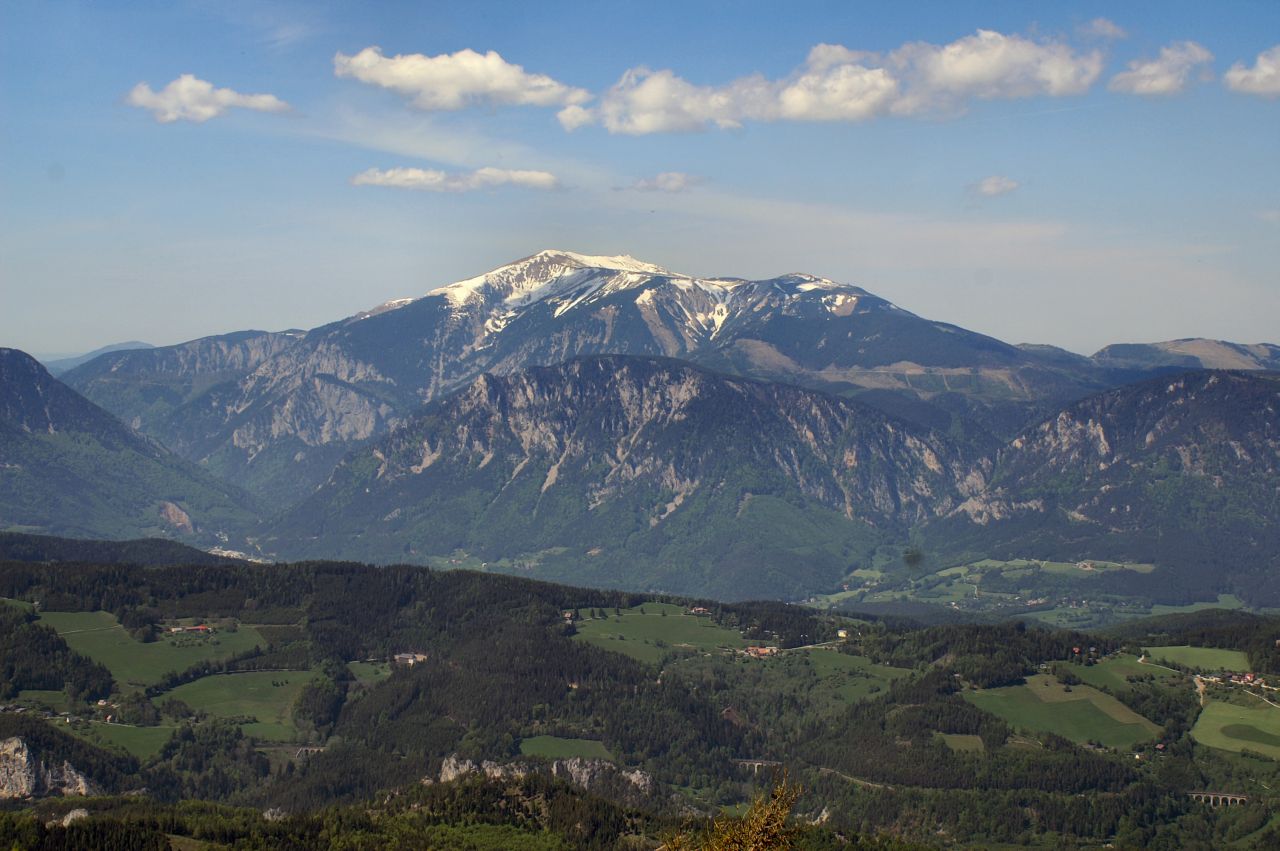Two-thousanders Of Austria on:
[Wikipedia]
[Google]
[Amazon]

 Two-thousanders are
Two-thousanders are

 Two-thousanders are
Two-thousanders are mountain
A mountain is an elevated portion of the Earth's crust, generally with steep sides that show significant exposed bedrock. Although definitions vary, a mountain may differ from a plateau in having a limited summit area, and is usually higher t ...
s that have a height of at least 2,000 metres above sea level, but less than 3,000 metres. The term is used in Alpine circles, especially in Europe (e.g. German: ''Zweitausender'').
The two photographs show two typical two-thousanders in the Alps that illustrate different types of mountain. The Säuling (top) is a prominent, individual peak, whereas the Schneeberg (bottom) is an elongated limestone massif.
In ranges like the Allgäu Alps, the Gesäuse or the Styrian-Lower Austrian Limestone Alps the mountain tour descriptions for mountaineer
Mountaineering or alpinism, is a set of outdoor activities that involves ascending tall mountains. Mountaineering-related activities include traditional outdoor climbing, skiing, and traversing via ferratas. Indoor climbing, sport climbing, an ...
s or hikers commonly include the two-thousanders, especially in areas where only a few summits exceed this level. Examples from these regions of the Eastern Alps
Eastern Alps is the name given to the eastern half of the Alps, usually defined as the area east of a line from Lake Constance and the Alpine Rhine valley up to the Splügen Pass at the Alpine divide and down the Liro River to Lake Como in t ...
are:
* the striking Nebelhorn (2,224 m) near Oberstdorf or the Säuling (2,047 m) near Neuschwanstein,
* the Admonter Reichenstein
The Admonter Reichenstein is a mountain in the Ennstal Alps and the highest and easternmost peak in the Reichenstein Group. An ascent of the mountain requires climbing ability sufficient to handle UIAA grade II climbs.
Topography
The Admonte ...
(2,251 m), Eisenerzer Reichenstein
The Eisenerzer Reichenstein is a mountain in the Ennstal Alps in the Austrian federal state of Styria. It lies south of the Erzberg near Eisenerz.
Eisenerzer Reichenstein von Eisenerz.jpg, Eisenerzer Reichenstein from Eisenerz
Eisenerz (6). ...
(2,165 m), Großer Pyhrgas
The Große Pyhrgas is a mountain in the Ennstal Alps on the border between Upper Austria and Styria.
At a height of it is the highest summit and western buttress of the Haller Mauern range.
Alpine hut
A mountain hut is a building located hig ...
(2,244 m) or Hochtor (2,369 m),
* the Hochschwab (2,277 m) and Vienna
en, Viennese
, iso_code = AT-9
, registration_plate = W
, postal_code_type = Postal code
, postal_code =
, timezone = CET
, utc_offset = +1
, timezone_DST ...
's local mountains, the Schneeberg (2,076 m) and the Rax
The Rax is a mountain range in the Northern Limestone Alps on the border of the Austrian federal provinces of Lower Austria and Styria. Its highest peak is the ''Heukuppe'' (2,007 m). The Rax, together with the nearby Schneeberg, are a tradition ...
(2,007 m).
The last-mentioned two are also the easternmost two-thousanders in the Alps, before their foothills descend to the Carpathians
The Carpathian Mountains or Carpathians () are a range of mountains forming an arc across Central Europe. Roughly long, it is the third-longest European mountain range after the Ural Mountains, Urals at and the Scandinavian Mountains at . The ...
and into the Pannonian Plain. Analogous examples may also be found in the Western Alps, but are rarer as the peaks are generally higher. In the Carpathians
The Carpathian Mountains or Carpathians () are a range of mountains forming an arc across Central Europe. Roughly long, it is the third-longest European mountain range after the Ural Mountains, Urals at and the Scandinavian Mountains at . The ...
, two-thousanders dominate large regions of highland, for example in Slovakia
Slovakia (; sk, Slovensko ), officially the Slovak Republic ( sk, Slovenská republika, links=no ), is a landlocked country in Central Europe. It is bordered by Poland to the north, Ukraine to the east, Hungary to the south, Austria to the ...
(including mountains in the High Tatra, Beskids and Low Tatra).
There are no mountains in the UK that reach 2,000 metres. However the term is sometimes used there to refer to mountains over 2,000 ''feet'' in height.Nuttall, John and Nuttall, Anne (2009). ''The Mountains of England and Wales: Vol 1 Wales'', 3rd ed., Cicerone, p. 98. .
See also
* Three-thousanders * Four-thousanders *Eight-thousander
The International Mountaineering and Climbing Federation (UIAA) recognises eight-thousanders as the 14 mountains that are more than in height above sea level, and are considered to be sufficiently independent of neighbouring peaks. There is no ...
s
References
{{Reflist Mountains by height Oronyms